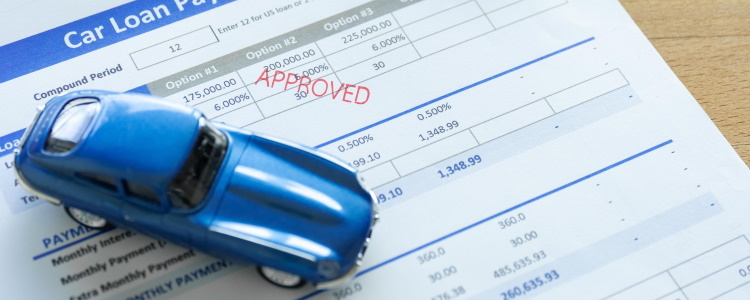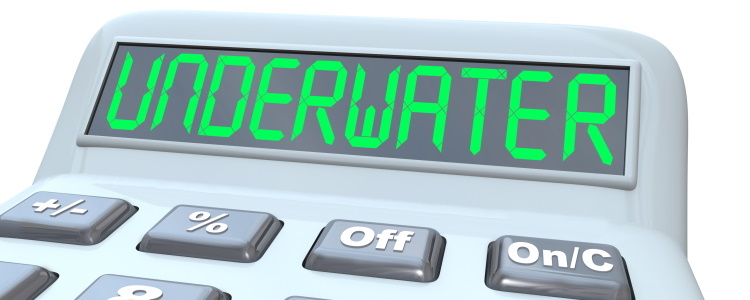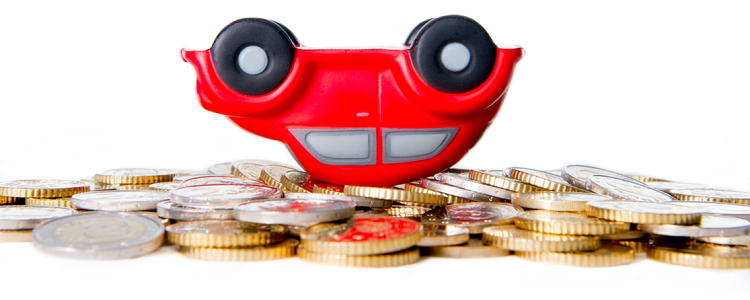Negative equity is what happens when you owe more on your auto loan than your car is worth. If it's time to get a new vehicle, but there's no equity to use in a trade, you may have the opportunity to roll over your negative equity into your new vehicle.
There's no set amount of negative equity that can be rolled into your next car loan, it will depend on several factors including the amount of negative equity, your new loan amount, and the loan-to-value ratio for your vehicle.
Even if you can roll over your negative equity into your next loan, it's not always a good idea, especially if you're already dealing with poor credit. Here’s some guidance on rolling over negative equity.
Can I Roll Over My Negative Equity?
Whether or not you can roll over negative equity depends on your personal situation.
Every lender varies in their requirements, and every borrower’s circumstances are different, including how much income, and available income, they have. If your loan balance with the negative equity factored in creates a high monthly payment that your available income just doesn’t have room for, you’re not likely to get approved for the auto loan.
Whether you believe it or not, most lenders don’t want to approve car loans that overextend borrowers. And they prefer to approve loan amounts that are comparable to or close to the vehicle’s value.
Rolling Over Negative Equity
When you roll over your negative equity you're adding the difference between your car's value and your loan amount onto your next auto loan.
Let's say, for example, you have $2,000 of negative equity on your current vehicle, and you're purchasing a vehicle for $15,000. Your next loan balance would be $17,000 with the negative equity rolled in. You’re essentially combining your loan balances into one, so it’s similar to debt consolidation. However, whether or not this is possible depends on how much you can reasonably afford.
Rolling over negative equity can be difficult
Depending on how much negative equity you have, you may be able to roll all of it over – but it depends on your budget, what you qualify for, and the lender you're working with.
Negative equity can make it harder to sell or trade your vehicle. If your auto loan is hundreds or even thousands of dollars more than your car’s current market value is, then selling it for what you owe can become a challenge.
Odds are, the amount of negative equity your vehicle has is going to be unique to you. Determining how much negative equity your car has means comparing your existing loan balance to the vehicle’s current value. To do this, get an estimated vehicle value from a site like Kelley Blue Book or NADAguides, and compare it to the 10-day payoff amount that you can request from your lender.
A look at the loan-to-value ratio
A lender may not approve a loan that exceeds the next car’s value by too much because lenders also take into account your loan-to-value ratio (LTV). An LTV is your loan amount compared to a car’s actual cash value (ACV). It’s calculated by dividing your loan amount by your vehicle's ACV.
LTV is typically expressed as a percentage, and most auto lenders typically have a maximum loan-to-value ratio of around 125%. This means that your vehicle’s loan shouldn’t exceed more than 125% of its value. Since rolling over negative equity means adding to the total balance of your next auto loan, depending on how much negative equity your current car has, it could exceed this limit.
Are You Stuck On The Trade-In Treadmill?
If you’re always rolling over negative equity on your auto loans, then you may be on the trade-in treadmill. It’s commonly defined as a cycle of being underwater on your car loan and opting to just roll that negative equity each time you buy. It’s an easy cycle to fall into, too.
Because rolling over negative equity means increasing how much you need to borrow, it also means more interest charges, and possibly, longer loan terms to make the monthly payments more affordable. Before you know it, you’re struggling to pay off the loan quickly enough to keep up with the vehicle’s depreciation (loss of value over time).
Each time you roll over negative equity, you’re likely to start your next auto loan in a negative equity position again because you likely borrowed more than what the vehicle is worth.
Getting off the trade-in treadmill can be as easy as waiting until your loan balance catches up with your vehicle’s value. Staying current on your auto loan and keeping your vehicle in good shape can help you catch up, or even making extra payments when you’re able to can help. Over time, your car’s depreciation usually slows down, too, if you maintain it.
Bad Credit Auto Loans Can Build Credit
Many bad credit borrowers can find themselves in a negative equity position if their interest rate is high which makes it hard to pay down their loans quickly. Since your credit score is typically the most important factor in determining your interest rate, a borrower with credit issues may be more likely to have an underwater auto loan due to interest charges and a high loan balance.
Fortunately, one of the better ways to improve your credit score is by taking on new credit that improves it. An auto loan that’s reported to your credit reports means your timely payments are reported, too. If you maintain a good payment history on your car loan, it could mean ending the loan with a better credit score than when you started.
Subprime auto loans are reported to the credit bureaus, and they’re typically for borrowers with credit challenges such as bankruptcy, no credit, situational bad credit, and other tough credit situations.
If your current car loan isn’t helping you improve your credit score, it may be time to consider a subprime car loan that’s reported to repair your credit. A higher credit score means a better chance at auto loan approval and qualifying for a lower interest rate next time around.















